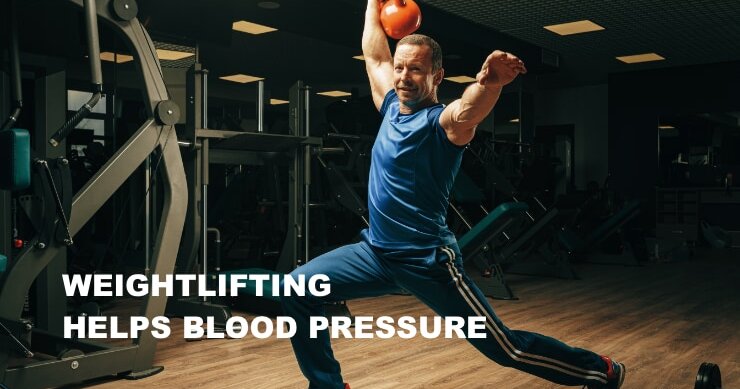Weightlifting Helps Blood Pressure

Which is better, aerobic or resistance exercises like weight training? That’s a question that gets asked at virtually every health-related conference that I attend. And it’s becoming clear that we need to pursue both, with regularity.
I suspect that many if not most people connect aerobic exercise with benefits related to cardiovascular parameters, and with good reason. The literature is replete with study after study confirming the importance of getting your heart rate up for a given period of time as tool to achieve better cardiovascular fitness. This includes things like heart function and blood pressure control.
But new research makes it clear that cardiovascular health, and in particular, blood pressure, are also positively affected by weight training. Brazilian researchers, publishing in the journal, Scientific Reports, found that strength training, 2 to 3 times each week provided substantial benefits in terms of helping lower blood pressure. Their evaluation of 14 studies comprising some 253 participants, all of whom were on medications to treat their elevated blood pressure, showed benefits when the study subjects engaged in weight lifting at least twice a week for 8 weeks. The benefits began to appear at around the 20th weight training session, which was about twice as long as it took to see the benefits from aerobic training.
But before a person with hypertension signs on to a new gym membership and starts bench pressing or other weight lifting exercises, I think it’s important to note that some types of exercises, especially weight lifting, can cause acute rises in blood pressure. So, it is vitally important to begin this type of program under the guidance of a qualified trainer after clearance is given by one’s healthcare provider. One thing that I commonly observe at my gym is people trying to move a lot of weight and doing so while holding their breath. My recommendation is to never hold your breath on the lift. Straining without breathing is called the Valsalva maneuver, and this can acutely raise blood pressure. I find it’s helpful to concentrate on breathing out on the lift and in when the weight is lowered. Again, this is something a trainer should be able to help you with.
So, we should add resistance exercise to our list of actionable ideas to help with blood pressure control. Other things to consider include:
- Lowering uric acid
- Aerobic exercise
- Limiting salt consumption
- Getting enough restorative sleep
- Spending time in nature
- Limiting fructose consumption
- Achieving ideal body weight
As a final comment, I think blood pressure control is critically important for heart and brain health. While the above tools are validated to help gain blood pressure control, medications are highly effective and should not be discounted. No doubt, the measures listed above can help lower blood pressure, and may even allow a lowering or perhaps even a discontinuation of blood pressure medications. All well and good. But take hypertension seriously, and let you healthcare provider help you with these decisions.













